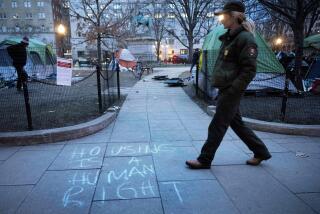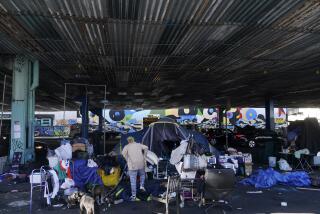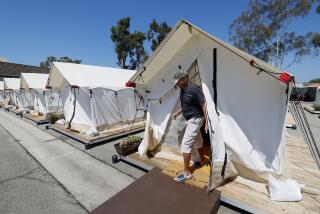Shantytown, U.S.A.
- Share via
I saw my first American shantytown in 1988 -- an encampment in Manhattan, at the Herald Square subway station. As I descended the stairs to the train, I was surprised by a group of men hanging out in a dark, cordoned-off area by the turnstiles. It was a gritty, smelly and sinister place, crowded with cardboard boxes of the kind made to contain large appliances.
Later, in the early 1990s, I visited a homeless encampment known as “the Hill” at the foot of the Manhattan Bridge in Lower Manhattan. These improvised dwellings were made of plywood, rags and cardboard. They seemed more substantial than the makeshift dwellings I’d seen before; some even had potted plants.
I encountered the colorful tent cities of skid row along 5th Street and along San Julian in the bright Los Angeles sunshine. I found others in the neighborhoods south of MacArthur Park, in South L.A. and on the banks of the L.A. River. These shantytowns consisted mostly of tents and cardboard boxes that grew with the addition of a “garage” for the shopping cart, a bicycle, a place for a pet, toys and plastic jugs of water.
Having experienced downward mobility in my childhood, these shanties somehow feel like part of the life I was destined to live. Even if I never live in a tent, I can’t help but see these encampments as my neighborhoods.


